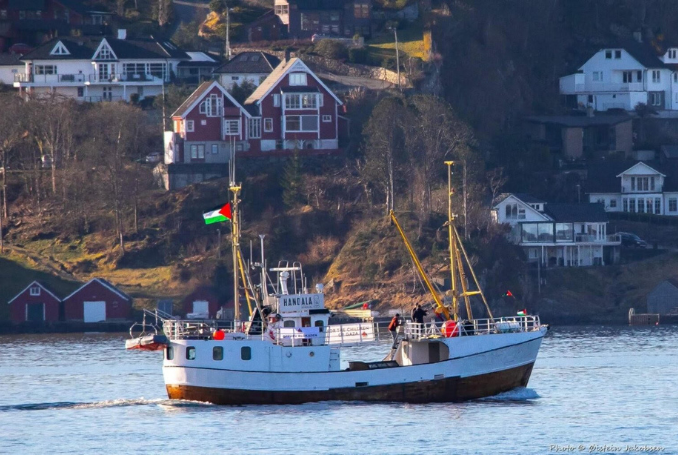Are Expensive Offshore Wind Farms Becoming Unviable?

Table of Contents
Soaring Construction and Installation Costs
The escalating expenses associated with building and deploying offshore wind farms are a major challenge. These costs encompass various elements, making the overall project exceptionally sensitive to economic fluctuations.
The Price of Turbines and Infrastructure
The sheer scale of offshore wind turbine technology contributes significantly to the project's expense. Individual turbines, along with their foundations, subsea cables, and grid connection infrastructure, demand substantial investment.
- Material Shortages: The global demand for steel, concrete, and rare earth minerals used in turbine construction has led to price increases and supply chain bottlenecks.
- Specialized Labor: The highly skilled workforce needed for installation and maintenance commands high wages, further driving up costs.
- Supply Chain Disruptions: Global events, such as the COVID-19 pandemic, have exacerbated existing supply chain issues, delaying projects and inflating costs.
- Example: The Vineyard Wind project off the coast of Massachusetts initially projected costs of $2.8 billion but faced significant overruns due to material cost increases and supply chain delays.
Financing Challenges and Inflation
The high capital expenditure needed for offshore wind projects makes them highly sensitive to interest rate hikes and inflation. Securing financing becomes increasingly difficult in times of economic uncertainty.
- Rising Interest Rates: Higher interest rates increase borrowing costs, making projects less financially attractive to investors.
- Limited Government Subsidies: While government subsidies play a crucial role, their availability and amounts are often insufficient to fully offset the rising costs.
- Investor Risk Aversion: The inherent uncertainties associated with large-scale infrastructure projects, coupled with escalating costs, can make investors hesitant to commit capital.
Environmental Concerns and Permitting Delays
Beyond the financial hurdles, environmental considerations and regulatory processes add to the complexities and expenses associated with offshore wind farm development.
Impact on Marine Ecosystems
Offshore wind farms, while a clean energy solution, can potentially impact marine ecosystems. The construction process can disturb seabed habitats, while operational aspects might affect marine life through noise pollution and collisions with marine mammals.
- Mitigation Strategies: Developers are increasingly implementing mitigation strategies, such as noise reduction techniques and careful site selection, but these measures add to project costs.
- Environmental Impact Assessments: Thorough environmental impact assessments are mandatory, often leading to delays and increased expenses as developers navigate complex regulatory requirements.
- Ongoing Debates: The environmental impact of offshore wind remains a topic of ongoing debate, influencing both public acceptance and regulatory hurdles.
Lengthy Permitting Processes and Regulatory Hurdles
The regulatory approval process for offshore wind projects can be exceptionally lengthy and complex, further contributing to project delays and cost increases.
- Bureaucratic Processes: Navigating multiple layers of government agencies and obtaining necessary permits often involves extensive paperwork and consultations, prolonging project timelines.
- Varying Regulatory Landscapes: The regulatory environment varies significantly between countries and regions, creating inconsistencies and uncertainty for developers.
- Stakeholder Consultations: Extensive stakeholder consultations with local communities, fishing industries, and environmental groups are necessary but can add to delays and costs.
Technological Advancements and Potential Cost Reductions
Despite the current cost challenges, technological advancements offer a potential pathway to reduce the expenses associated with expensive offshore wind farms.
Innovations in Turbine Design and Manufacturing
Significant progress in turbine design and manufacturing holds the key to reducing future costs.
- Larger Turbine Sizes: Larger turbines can generate more energy with fewer units, leading to economies of scale in construction and installation.
- Floating Offshore Wind Technology: Floating platforms allow for the development of offshore wind farms in deeper waters, potentially unlocking vast new energy resources.
- Advanced Materials: New materials and manufacturing techniques can improve turbine efficiency and reduce maintenance costs.
Improved Operational Efficiency and Maintenance Strategies
Optimizing operational efficiency and maintenance strategies can significantly reduce long-term costs.
- Data Analytics and Predictive Maintenance: Data analytics and predictive maintenance can help identify potential issues before they escalate into costly repairs, improving turbine lifespan and reducing downtime.
- Improved Logistics: Streamlining logistical processes, including transportation and installation, can significantly improve efficiency and reduce overall costs.
Government Policies and Subsidies: A Balancing Act
Government policies and subsidies are essential in supporting the development of offshore wind energy, particularly in balancing the need for affordable renewable energy with environmental protection.
The Role of Government Incentives and Support
Government support plays a vital role in making offshore wind projects financially viable.
- Tax Credits and Feed-in Tariffs: Tax credits and feed-in tariffs incentivize investment and reduce the financial burden on developers.
- Long-Term Sustainability: The long-term sustainability of government support is crucial for ensuring the continued development of the offshore wind industry.
Navigating the Trade-offs between Cost and Environmental Goals
Balancing cost considerations with environmental protection is a key challenge in offshore wind development.
- Environmental Regulations: Strict environmental regulations are necessary to protect marine ecosystems, but they can increase project costs and timelines.
- Community Engagement: Engaging with local communities and addressing their concerns is crucial for gaining public support and minimizing potential conflicts.
Conclusion
The high costs of expensive offshore wind farms present a significant challenge to the energy transition. While current projects face substantial financial hurdles, driven by factors such as inflation, supply chain issues, and complex permitting processes, technological advancements and optimized operational strategies offer potential for future cost reduction. Government policies play a critical role in supporting the industry's growth while navigating the trade-offs between cost, environmental protection, and stakeholder concerns. Whether expensive offshore wind farms remain unviable ultimately depends on the successful implementation of these mitigating factors. Learn more about the future of expensive offshore wind farms and the ongoing efforts to make this crucial renewable energy source more sustainable. Share your thoughts on the viability of expensive offshore wind farms in the comments below.

Featured Posts
-
 The Ripple Effect Oil Supply Shocks And The Airline Industrys Future
May 03, 2025
The Ripple Effect Oil Supply Shocks And The Airline Industrys Future
May 03, 2025 -
 Nigel Farage And The Future Of Reform Uk In Uk Politics
May 03, 2025
Nigel Farage And The Future Of Reform Uk In Uk Politics
May 03, 2025 -
 Securing Funding For A 270 M Wh Bess Project In The Belgian Merchant Market
May 03, 2025
Securing Funding For A 270 M Wh Bess Project In The Belgian Merchant Market
May 03, 2025 -
 Drone Attack On Ship Near Malta Freedom Flotilla Coalition Statement
May 03, 2025
Drone Attack On Ship Near Malta Freedom Flotilla Coalition Statement
May 03, 2025 -
 Friday School Cancellations Snow Ice And Trash Collection Disruptions
May 03, 2025
Friday School Cancellations Snow Ice And Trash Collection Disruptions
May 03, 2025
